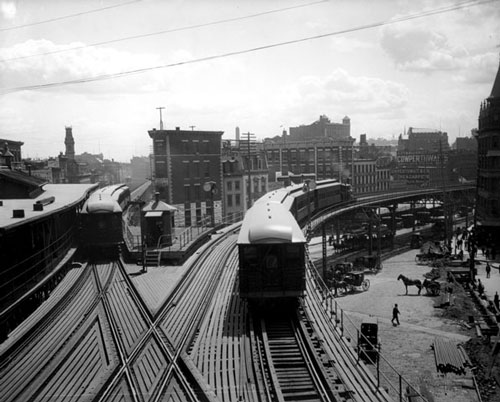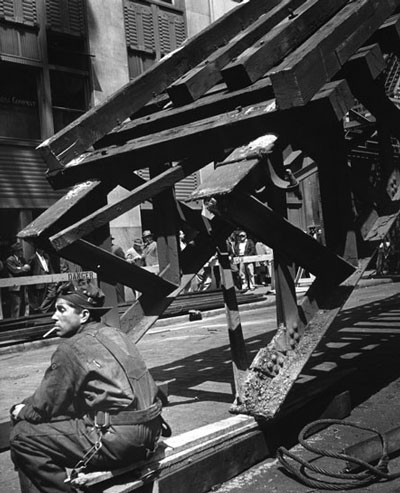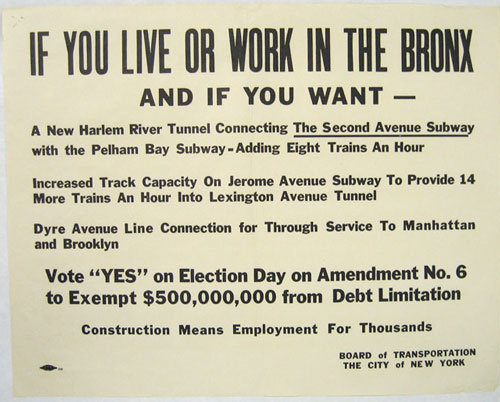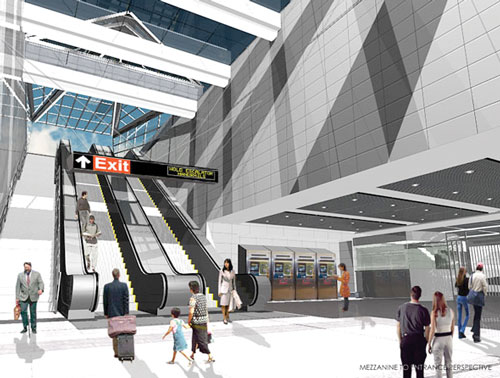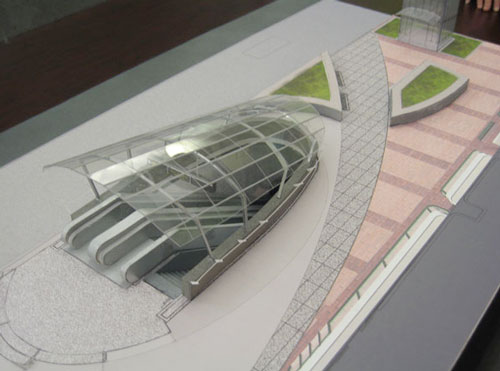|
|
THE SECOND AVENUE SUBWAYProposals to build a subway line along Second Avenue date back to the 1920s. Since then, the number of people traveling on the East Side of Manhattan has steadily grown as neighborhoods transitioned from tenements and low-rise industrial buildings to residential and office towers. As the East Side became more densely populated, it lost two of its three rapid transit lines: the Second Avenue “El” was closed in sections beginning in 1940, followed by the Third Avenue “El” in 1955, leaving only the long overcrowded Lexington Avenue subway line (4, 5, 6 trains). After frustrated efforts to build a Second Avenue subway in the 1940s and 1970s, the MTA began a study in 1995 to find an alternative for some of the 1.5 million daily riders of the Lexington Avenue line – more daily riders than the rail systems of Washington, Boston, and Chicago combined. After extensive research, technical analysis, public meetings, and governmental review, a four-phased plan emerged for a Second Avenue line from 125th Street in Harlem to Hanover Square in the Financial District of Lower Manhattan. In 2007, the Federal Transit Administration guaranteed $1.3 billion in federal funding for the first phase of construction.The work, now underway, includes a 2-track tunnel from 105th Street to 63rd Street, stations at 96th, 86th, and 72nd Streets, and new entrances to the existing station at 63rd Street and Third Avenue.When phase one is completed in 2015 it will accommodate about 200,000 daily riders, relieving the most congested portion of the Lexington Avenue line. When the entire Second Avenue subway is operational it is projected to carry 560,000 people each day.
Second and Third Avenue Elevated Lines at Chatham Square. Circa 1920. In 1878 the New York Elevated Railway Company opened the Third Avenue El that ran from South Ferry to 129th Street.The following year the Manhattan Railway Company took control of all the elevated lines in Manhattan and in 1890 it completed the Second Avenue El from Chatham Square to 129th Street.
Demolition of the Third Avenue El. 1955. Photograph by Ann Shanks. Ridership on elevated lines sharply decreased during the Great Depression.The last Third Avenue El train in Manhattan ran on May 12, 1955. The city began dismantling the Second Avenue El in 1940. It took two full years to remove the entire structure.The iron and steel were recycled for war materials.While the removal of the els relieved many neighborhoods of noise, dirt, and darkness, the city today has less rapid transit mileage than it had seventy years ago.
Proposed Additional Rapid Transit Lines and Proposed Vehicular Tunnels. 1929. Board of Transportation of the City of New York, Engineering Department. New York Transit Museum Collection. In August 1929, the city approved an expansion of the subway system, which included a Second Avenue line with a projected construction cost of just under $100 million.The line would run from Pine Street in Lower Manhattan to 125th Street and then continue north under the Harlem River where it would split into several branches in the Bronx.Two months later the stock market crashed. As the Depression deepened, funding options disappeared and the project was suspended. The stainless steel body R-11 was an experimental design for the planned Second Avenue subway of the 1940s; only one ten-car train was purchased, for $1 million.The subway’s so-called “car of tomorrow” had many advanced features that were later integrated into standard car designs, including filtered air ventilation, a public address system, and disc brakes. In 1965, the R-11 cars were modified into R-34 trains that ran until 1976.The lone surviving R-11 (No.8013) is on display in the Transit Museum’s main facility in downtown Brooklyn. This intricately detailed model, with replica car cards and working lights, was commissioned by the manufacturer, the Budd Car Company, for display in the New York City Golden Jubilee at the Grand Central Palace in 1948, a year before the cars were delivered.
Proposed Second Avenue Subway Trunk Line. 1950. After the failure of the original Harlem to Pine Street plan of 1929, a simpler route was proposed in 1945, followed by a 1947 plan that would have connected a Second Avenue line to Brooklyn via the BMT tracks over the Manhattan and Williamsburg bridges. By 1950, plans called for a connection from Second Avenue at 76th Street to 34th Avenue in Queens, via a new tunnel under the East River.The city raised money to start construction, but the onset of the Korean War caused massive inflation and soaring prices for construction materials. Funds were steered to less ambitious capital projects, and the dream of a Second Avenue subway died for a second time. The proposed tunnel under the East River, seen in the map above, was eventually built in the 1970s.The F train has used the upper level since 1989.The LIRR will eventually use the lower level when East Side Access starts bringing trains to Grand Central Terminal.
Bond Act Poster. 1951. Board of Transportation, City of New York. Ne w York voters approved bonds to raise money to restart Second Avenue subway construction in 1951, but the funding was diverted to buy new cars, lengthen platforms, and main-tain other parts of the aging subway system.
East 111th Street and Second Avenue Looking Southeast. 1973. Photograph by H. Bernstein Assoc. Inc. Funding from a 1967 bond act was used to begin tunneling a proposed two-track Second Avenue line from the Bronx to Lower Manhattan. Several tunnel segments were completed between 1973 and 1975 but, once again, financial crisis halted construction. During the 1980s the MTA entertained proposals to rent out the completed sections for various uses: prisons, discos, wine cellars, bowling alleys. City Council member Henry Stern suggested car racetracks, driving ranges, parking lots, and—his favorite—mushroom farms. In the end, the sections remained empty.
West Side of East 110th Street Looking South West. 1973. Photograph by H. Bernstein Assoc. Inc. Despite eff orts to minimize above ground disruption, cut and cover tunneling requires tearing up the street. With the city’s economic recovery in the 1990s, efforts to resume construction of the line were revived.After a complex approval process, the MTA won authorization in April 2004 to build the Second Avenue subway. Construction will take place in four phases. The first will provide service along Second Avenue from 96th Street to 63rd Street, with connections there to the Lexington Avenue and Q lines.The second phase will extend up to 125th Street, where connections will be possible to the Lexington Avenue line and Metro-North.The final two segments will go downtown to Houston Street, and finally to Hanover Square in the Financial District.
96th Str eet Station Platform. Courtesy of MTA Capital Construction Company.
Phases of Construction. Courtesy of MTA Capital Construction Company. Although most of the Second Avenue Subway will be dug by tunnel boring machines, the 96th Street station will be excavated by cut and cover due to soft soil in the surrounding area.
96th Street Station Mezzanine. Courtesy of MTA Capital Construction Company.
96th Street Station Platform. Courtesy of MTA Capital Construction Company.
Model of Subway Entrance Canopy. 2008. Courtesy of MTA Capital Construction Company.
Model of 86th Street Station. 2004. Courtesy of MTA Capital Construction Company.
© 2015 TLC Magazine Online, Inc. |
